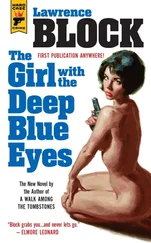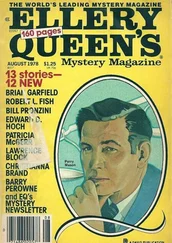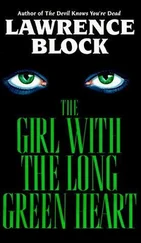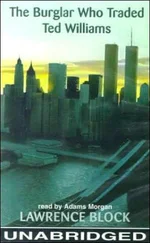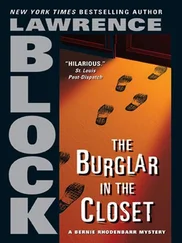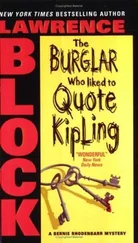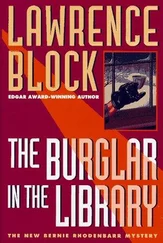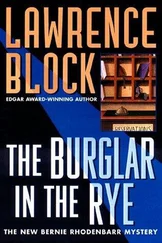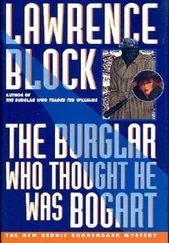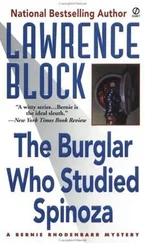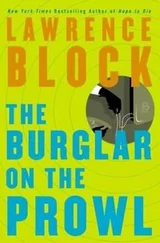There was more. She gave me the four-dollar lecture, declaiming it as fervently as she’d read about poor Smith a couple of days earlier. “Piet Mondrian held his first exhibition in America in 1926,” she told me. “Fourteen years later he moved here. He’d gone to Britain in 1939 to get away from the war. Then, when the Luftwaffe started bombing London, he came here. New York fascinated him, you know. The grid pattern of the streets, the right angles. That was the beginning of his boogie-woogie period. You look confused.”
“I didn’t know he was a musician.”
“He wasn’t. His painting style changed, you see. He was inspired by the traffic in the streets, the elevated railways, the yellow cabs, the red lights, the jazzy pulsebeat of Manhattan. You’re probably familiar with Broadway Boogie Woogie -that’s one of his most famous canvases. It’s in the Museum of Modern Art. There’s also Victory Boogie Woogie and, oh, several others.”
In several other museums, I thought, where they were welcome to remain.
“I see,” I said, which is something I very often say when I don’t.
“He died on February 1, 1944, just six weeks before his seventy-second birthday. I believe he died of pneumonia.”
“You certainly know a great deal about him.”
Her hands moved to adjust her hat, which didn’t really need adjusting. Her eyes aimed themselves at a spot just above and to the left of my shoulder. “When I was a little girl,” she said evenly, “we went to my grandmother’s and grandfather’s every Sunday for dinner. I lived with my parents in a house in White Plains, and we came into the city where my grandparents had a huge apartment on Riverside Drive, with enormous windows overlooking the Hudson. Piet Mondrian had stayed at that apartment upon arriving in New York in 1940. A painting of his, a gift to my grandparents, hung over the sideboard in the dining room.”
“I see.”
“We always had the same seating arrangement,” she said, and closed her big eyes. “I can picture that dinner table now. My grandfather at one end, my grandmother at the other near the door to the kitchen. My uncle and aunt and my younger cousin on one side of the table, and my mother and father and me on the other. All I had to do was gaze above my cousin’s head and I could look at the Mondrian. I had it to stare at almost every Sunday night for all of my childhood.”
“I see.”
“You’d think I’d have tuned it out as children so often do. After all, I’d never met the artist. He died before I was born. Nor was I generally responsive to art as a child. But that painting, it evidently spoke to me in a particular way.” She smiled at a memory. “When I was in art class, I always tried to produce geometrical abstracts. While the other children were drawing horses and trees, I was making black-and-white grids with squares of red and blue and yellow. My teachers didn’t know what to make of it, but I was trying to be another Mondrian.”
“Actually,” I said tentatively, “his paintings don’t look all that hard to do.”
“He thought of them first, Mr. Rhodenbarr.”
“Well, there’s that, of course, but-”
“And his simplicity is deceptive. His proportions are quite perfect, you see.”
“I see.”
“I myself had no artistic talent. I wasn’t even a fair copyist. Nor did I have any true artistic ambitions.” She cocked her head again, probed my eyes with hers. “The painting was to be mine, Mr. Rhodenbarr.”
“Oh?”
“My grandfather promised it to me. He was never a wealthy man. He and my grandmother lived comfortably but he never piled up riches. I don’t suppose he had much idea of the value of Mondrian’s painting. He knew its artistic worth, but I doubt he would have guessed the price it would command. He never collected art, you see, and to him this painting was nothing more or less than the valued gift of a treasured friend. He said it would come to me when he died.”
“And it didn’t?”
“My grandmother was the first to die. She contracted some sort of viral infection which didn’t respond to antibiotics, and within a month’s time she was dead of kidney failure. My parents tried to get my grandfather to live with them after her death but he insisted on staying where he was. His one concession was to engage a live-in housekeeper. He never really recovered from my grandmother’s death, and within a year he too was dead.”
“And the painting-”
“Disappeared.”
“The housekeeper took it?”
“That was one theory. My father thought my uncle might have taken it, and I suppose Uncle Billy thought the same of my father. And everyone suspected the housekeeper, and there was some talk of an investigation, but I don’t think anything ever came of it. The family came to some sort of agreement that there’d been a burglary, because there were other things missing, some of the wedding silver, and it was easier to attribute it to some anonymous burglar than for us to make a thing of suspecting each other.”
“And I suppose the loss was covered by insurance.”
“Not the painting. My grandfather had never taken out a floater policy on it. I’m sure it never occurred to him. After all, it had cost him nothing, and I’m sure he never thought it might be stolen.”
“It was never recovered?”
“No.”
“I see.”
“Time passed. My own father died. My mother remarried and moved across the country. Mondrian remained my favorite painter, Mr. Rhodenbarr, and whenever I looked at one of his works in the Modern or the Guggenheim I felt a strong primal response. And I felt a pang, too, for my painting, my Mondrian, the work that had been promised to me.” She straightened up, set her shoulders. “Two years ago,” she said, “there was a Mondrian retrospective at the Vermillion Galleries. Of course I went. I was walking from one painting to another, Mr. Rhodenbarr, and I was breathless as I always am in front of Mondrian’s work, and then I stepped up to one painting and my heart stopped. Because it was my painting.”
“Oh.”
“I was shocked. I was stunned. It was my painting and I would have known it anywhere.”
“Of course you hadn’t seen it in ten years,” I said thoughtfully, “and Mondrian’s paintings do have a certain sameness to them. Not to take away anything from the artist’s genius, but-”
“It was my painting.”
“If you say so.”
“I sat directly across from that painting every Sunday night for years. I stared at it while I stirred my green peas into my mashed potatoes. I-”
“Oh, did you do that, too? You know what else I used to do? I used to make a potato castle and then make a sort of moat of gravy around it, and then I’d have a piece of carrot for a cannon and I’d use the green peas for cannonballs. What I really wanted was some way to catapult them into the brisket, but that was where my mother drew the line. How did your painting get to the Vermillion Galleries?”
“It was on loan.”
“From a museum?”
“From a private collection. Mr. Rhodenbarr, I don’t care how the painting got into the private collection or how it got out of it. I just want the painting. It’s rightfully mine, and at this point I wouldn’t even care if it weren’t rightfully mine. It’s been an overwhelming obsession ever since I saw it at the retrospective. I have to have it.”
What was it about Mondrian, I wondered, that appealed so strongly to crazy people? The catnapper, the man on the phone, Onderdonk, Onderdonk’s killer, and now this ditsy little lady. And, come to think of it, who was she?
“Come to think of it,” I said, “who are you?”
“Haven’t you been listening? My grandfather-”
Читать дальше

